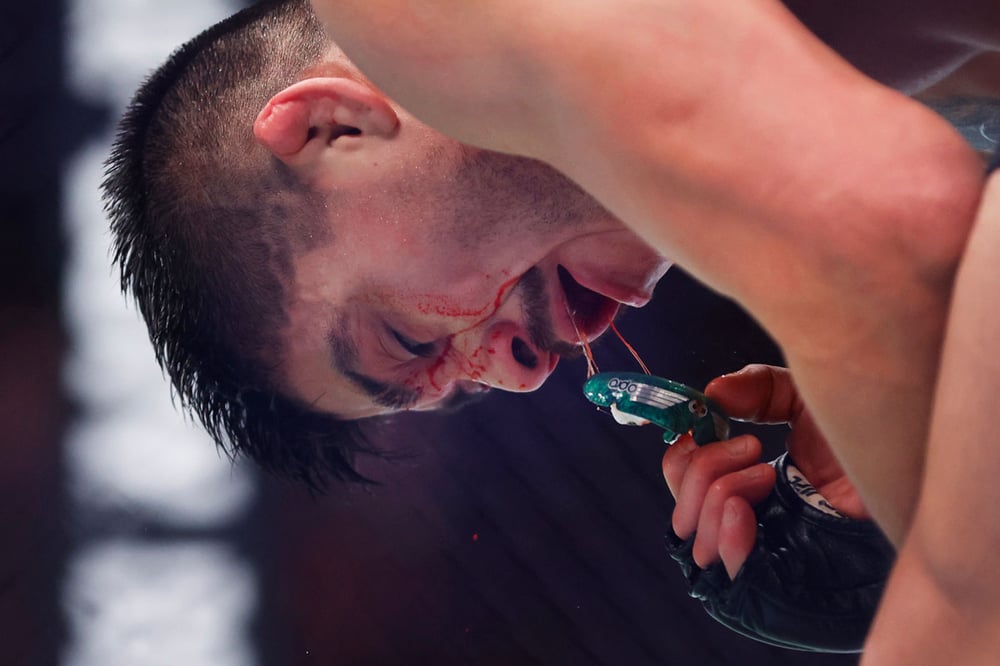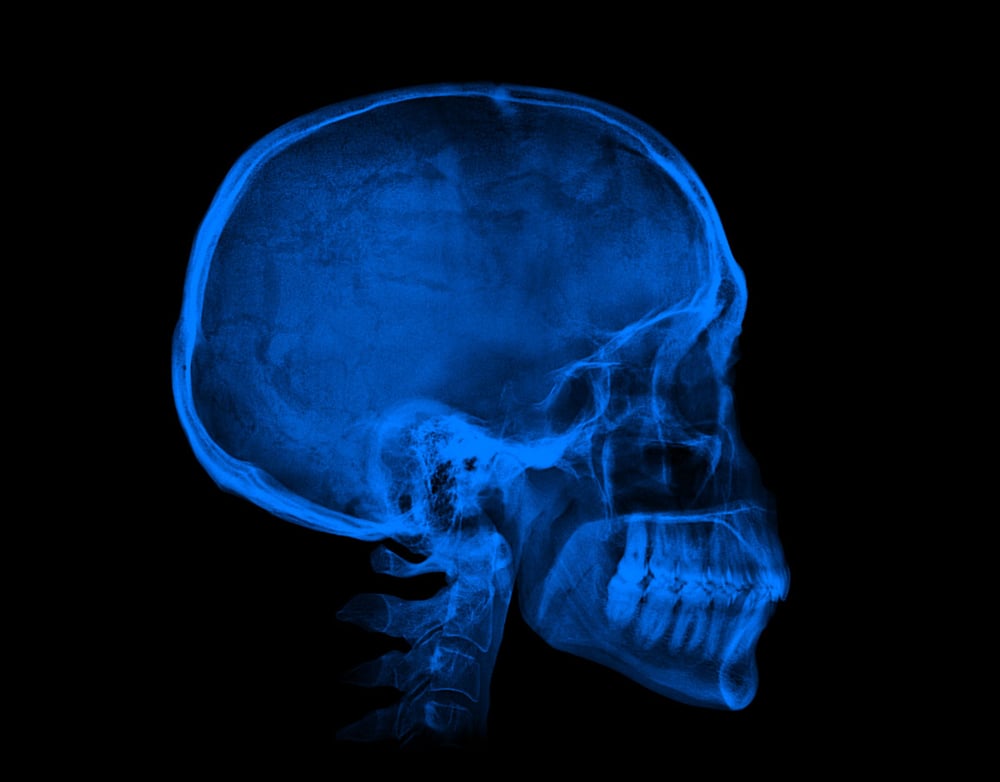
Issue 206
June 2024
Facial rearranging might be part of a fighter's job description, so, surprisingly, we don’t see more of them sipping dinner through a straw. Sure, there are some jaw-dropped outliers in the MMA landscape. Fighters like Colby Covington, Rafael dos Anjos, Eddie Wineland, Cub Swanson, and Alex Polizzi have suffered this injury, but it is increasingly uncommon and the following explores why.

Those big-name jaw breaks were mostly fractures. They also happened in the past 10 years, so they are relatively rare, even though you’d expect busted jaws and MMA to go together like trampolines and fail videos. Studies show that while combat sports entail significant injury risks, the incidence of broken jaws remains relatively low for combat athletes. For example, a 16-year study of combat sports athletes in Victoria, Australia, reported an injury rate of 250.6 per 1000 fight participations, with 89.8% of injuries occurring in the head/neck/face region. Facial lacerations and concussions were the most frequent injuries. Jaw breaks are about as rare as hens’ teeth, and the following piece investigates why.
THE ROLE OF MOUTHGUARDS IN THE PREVENTION
A big-ticket factor in the rarity of broken jaws is the use of mouthguards, which have stopped the undercard from looking like their grills belong in a pumpkin carving contest. While primarily designed to protect teeth and prevent concussions, mouthguards also stabilize the jaw's position. Custom-fitted mouthguards reduce orofacial injuries by absorbing and distributing impact forces, acting as a buffer between the upper and lower jaw. A 2019 British Journal of Sports Medicine study found that athletes wearing custom-fitted mouthguards had significantly fewer orofacial injuries than those without them.
Dr. Kevin Winters, DDS, a prominent cosmetic dentist to contact sports athletes, explains, "A major reason we don't see more can be the stabilization of properly made mouthguards. Although these typically are associated with more protection from tooth injury and concussion prevention, mouthguards can help lessen the chance of broken jaws. When biting down on your teeth, the added tension helps keep the jaw from moving much. This can significantly reduce the risk of a broken jaw. An open jaw, however, is much more susceptible to fractures.” Winters uses the analogy of a broom handle to illustrate this point. "Breaking a jaw when the mouth is shut requires extreme energy, much like trying to break a broom handle lying flat on the ground."
Those custom mouthguards aren’t just for show. They’re a big reason MMA’s jawlines aren’t swinging like a loose gate in a storm.

JAWLINE INSIGHTS
The findings in MMA are mirrored in other combat sports, highlighting common protective measures and injury patterns. In a study published in the Journal of Emergencies, Trauma, and Shock, researchers found that among 120 male athletes engaged in boxing, taekwondo, kickboxing, and Muay Thai, 79.2% sustained at least one traumatic facial injury. Kickboxing caused the most maxillofacial injuries, with nasal fractures being the most common. These findings highlight the high-risk areas in combat sports and underscore the importance of protective gear and preventive measures. However, mouthguards aren't a complete safeguard. The nature of MMA means injuries are inevitable. "There is no hiding from the fact that combat in the Octagon is violent, and injuries will happen no matter what. It is an accepted risk fighters take," Winters acknowledges. Fighters accept the risk, understanding that even with the best preventive measures, the nature of the sport makes complete protection impossible.
Dr Winters suggests wisdom teeth can also influence the likelihood of jaw fractures. "One thing that can be assessed to lessen the chance of a jaw fracture would be looking at the position of the wisdom teeth. These are often positioned where the jaw can be less dense, less strong, and less able to handle a major blow. Having wisdom teeth removed and then allowing sufficient time for healing can decrease the chances of having the jaw break in that area," Dr. Winters advises. Removing wisdom teeth can fortify the jaw, making it less susceptible to fractures in those areas.
GENETIC AND TRAINING FACTORS
Why are some fighters more resistant to being knocked out? Dr. Winters explains that it is a combination of factors. "Genetics play a big role; some people are naturally more resistant to being knocked out due to thicker bone structures. Training also makes a significant difference. Over time, fighters develop greater resilience to headshots."
He elaborates, "A stiff jab might knock down a novice, but after 20 fights, they can take a big punch without going down. This resilience develops through consistent training, sparring, and fighting."
The physical structure of the skull and neck also plays a critical role.
"Fighters with flatter faces and shorter jaws are less likely to transfer the energy of a punch directly to the brain, reducing the risk of a knockout. Even if you have a strong neck, you won’t have an iron chin if you are not genetically gifted with it. Short jaws and flat faces help absorb and disperse the impact energy," Winters notes. The mass and build of the skull, combined with strong neck muscles, help reduce the acceleration of the skull upon impact, which is crucial in preventing knockouts.

ELIMINATION AND SELECTION BIAS
A more straightforward explanation for the toughness of top fighters is elimination. Only the toughest make it to the big promotions and TV fights. Dr. Winters says, "When you watch a fight, you only see the toughest of the tough. Everyone else got eliminated before that stage. This is called selection bias—you’re only seeing the top performers."
This selection process ensures that only those with exceptional durability and skill reach the highest levels of competition. Elite fighters have spent years honing their skills and toughening their bodies to survive and thrive in the sport.
WORSE THAN BOXING?
MMA may roll with a rep for brutality, but it is safer than boxing in terms of jaw lines. A study published in the Journal of Emergencies, Trauma, and Shock found that among 120 male athletes engaged in boxing, taekwondo, kickboxing, and Muay Thai, 79.2% sustained at least one traumatic facial injury, with kickboxing causing the most maxillofacial injuries. Boxers had a higher incidence of head injuries (23.5%) and loss of consciousness (7.1%) compared to MMA fighters (4.2% and 1.9%, respectively). The difference lies in the range of targets and fight duration. MMA fighters can strike the body, torso, and legs, reducing head-focused impacts. Additionally, MMA fights are shorter and involve smaller gloves, leading to fewer severe head injuries. While both sports carry risks, MMA's rules and techniques result in fewer jaw injuries than boxing.
JAWBREAKERS ANONYMOUS
Not all MMA jawlines are destined to look like a burnt kettle. Thanks to custom-fitted mouthguards and a few genetic blessings, fighters often keep their chins intact than expected. When the fighters are in pre-fight pressers and flash a Hollywood smile, remember behind every knockout punch avoided, there's a well-placed mouthguard making sure their jaw isn't swinging like a saloon door. The post-fight grin is intact because of countless hours of hard work and grit.










